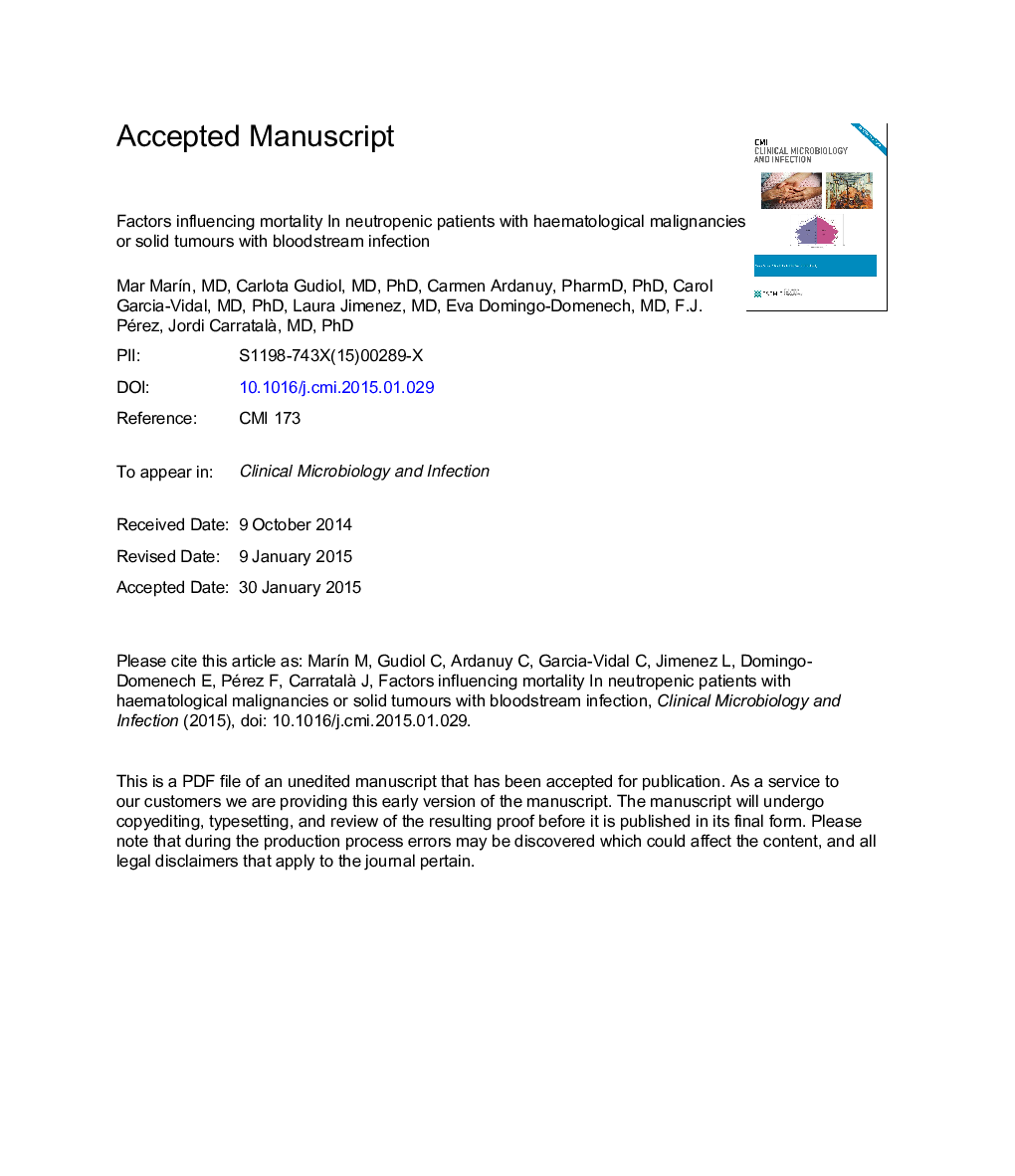| Article ID | Journal | Published Year | Pages | File Type |
|---|---|---|---|---|
| 6129353 | Clinical Microbiology and Infection | 2015 | 27 Pages |
Abstract
The purpose of this study was to identify factors influencing mortality in neutropenic patients with haematologic malignancies or solid tumours with bloodstream infection (BSI). All episodes of BSI occurring in adult neutropenic patients with haematologic malignancies or solid tumours were prospectively recorded from January 2006 to December 2013. We analysed the factors influencing mortality in both groups of patients. We documented 602 consecutive episodes of BSI; 510 occurred in patients with haematologic malignancies and 92 in patients with solid tumours. The overall case-fatality rates were 12% and 36%, respectively. Independent risk factors associated with a higher case-fatality rate in patients with haematologic malignancies were: intensive care unit admission (odds ratio (OR), 15.2; 95% confidence interval (CI), 5.4-42.7), advanced neoplasm (OR, 8.7; 95% CI, 2.9-25.7), corticosteroid therapy (OR, 7.0; 95% CI, 3-16.4), multidrug-resistant Gram-negative BSI (OR, 3.8; 95% CI, 1.2-11.8) and a Multinational Association for Supportive Care in Cancer risk score of <21 (OR, 3.1; 95% CI, 1.3-7.4). By contrast, coagulase-negative staphylococci BSI (OR, 0.04; 95% CI, 0.004-0.5) and empirical antibiotic combination therapy (OR, 0.1; 95% CI, 0.05-0.3) were found to be protective. Independent risk factors for overall case-fatality rate in patients with solid tumours were: shock at presentation (OR, 14.3; 95% CI, 3.2-63.8), corticosteroid therapy (OR, 10; 95% CI, 2.3-44) and advanced neoplasm (OR, 7.8; 95% CI, 1.4-41.4). Prognostic factors identified in this study may help to detect those patients at higher risk of death in each group. Medical intervention addressing some of these factors might improve the outcome of BSI in neutropenic patients with haematologic malignancies or solid tumours.
Related Topics
Life Sciences
Immunology and Microbiology
Microbiology
Authors
M. MarÃn, C. Gudiol, C. Ardanuy, C. Garcia-Vidal, L. Jimenez, E. Domingo-Domenech, F.J. Pérez, J. Carratalà ,
